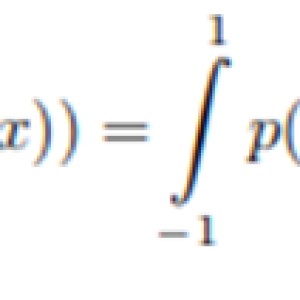Consider the function, prove that it's bilinear, symmetric, and positive definite
[Orthogonal Polynomials]. Consider the following bi-valued function defined on the space of polynomials of degree ≤ 2:
(Image 1)
For whichever polynomials p(x), q(x) ∈ P≤2. Consider the following polynomials:
p0(x) = 1, p1(x) = x, p2(x) = (3/2 )x² − 1/2 .
(a) Prove that F is bilinear, symmetric, and positive definite
(b) Prove that the family (p0, p1, p2) is an orthogonal basis of P≤2.
 Vienrods
Vienrods
28
Answer
Answers can only be viewed under the following conditions:
- The questioner was satisfied with and accepted the answer, or
- The answer was evaluated as being 100% correct by the judge.
1.7K
The answer is accepted.
Join Matchmaticians Affiliate Marketing
Program to earn up to a 50% commission on every question that your affiliated users ask or answer.
- answered
- 1331 views
- $8.00
Related Questions
- Character of 2-dimensional irreducible representation of $S_4$
- Questions about using matrices for finding best straight line by linear regression
- Singular Value Decomposition Example
- Hello! I Would like a proof detailed of the following question.
- Algebraic and Graphical Modelling Question
- Linear algebra
- Relating dot product divided with square of the vector while changing basis of vector
- Space of all matrices with given column space

